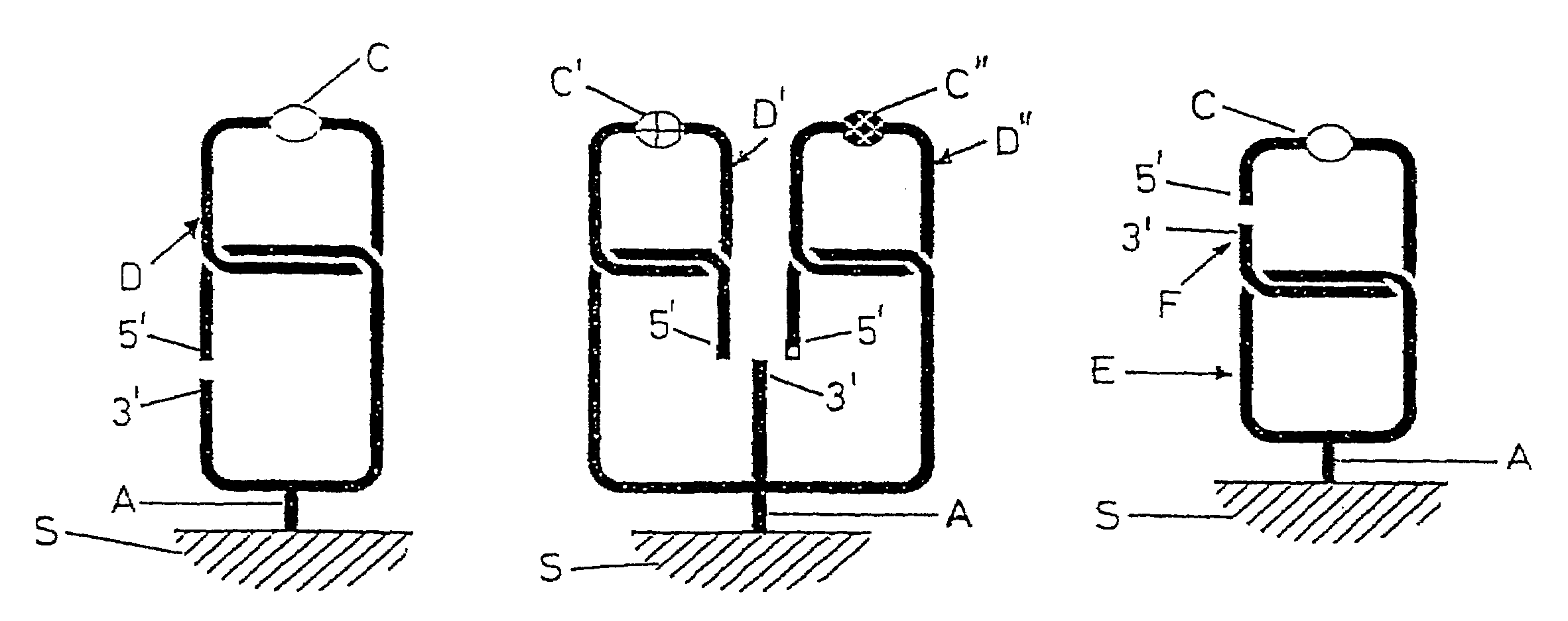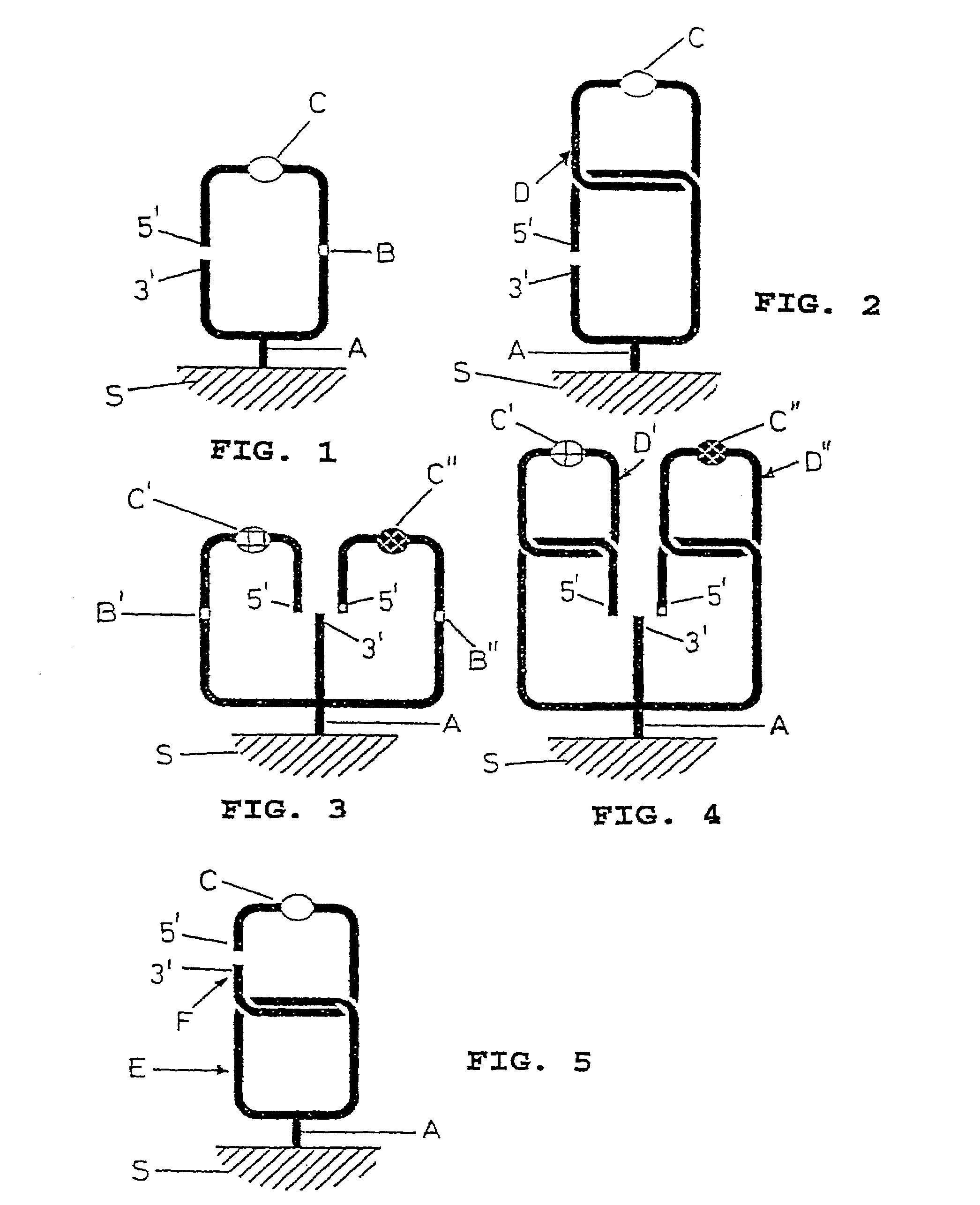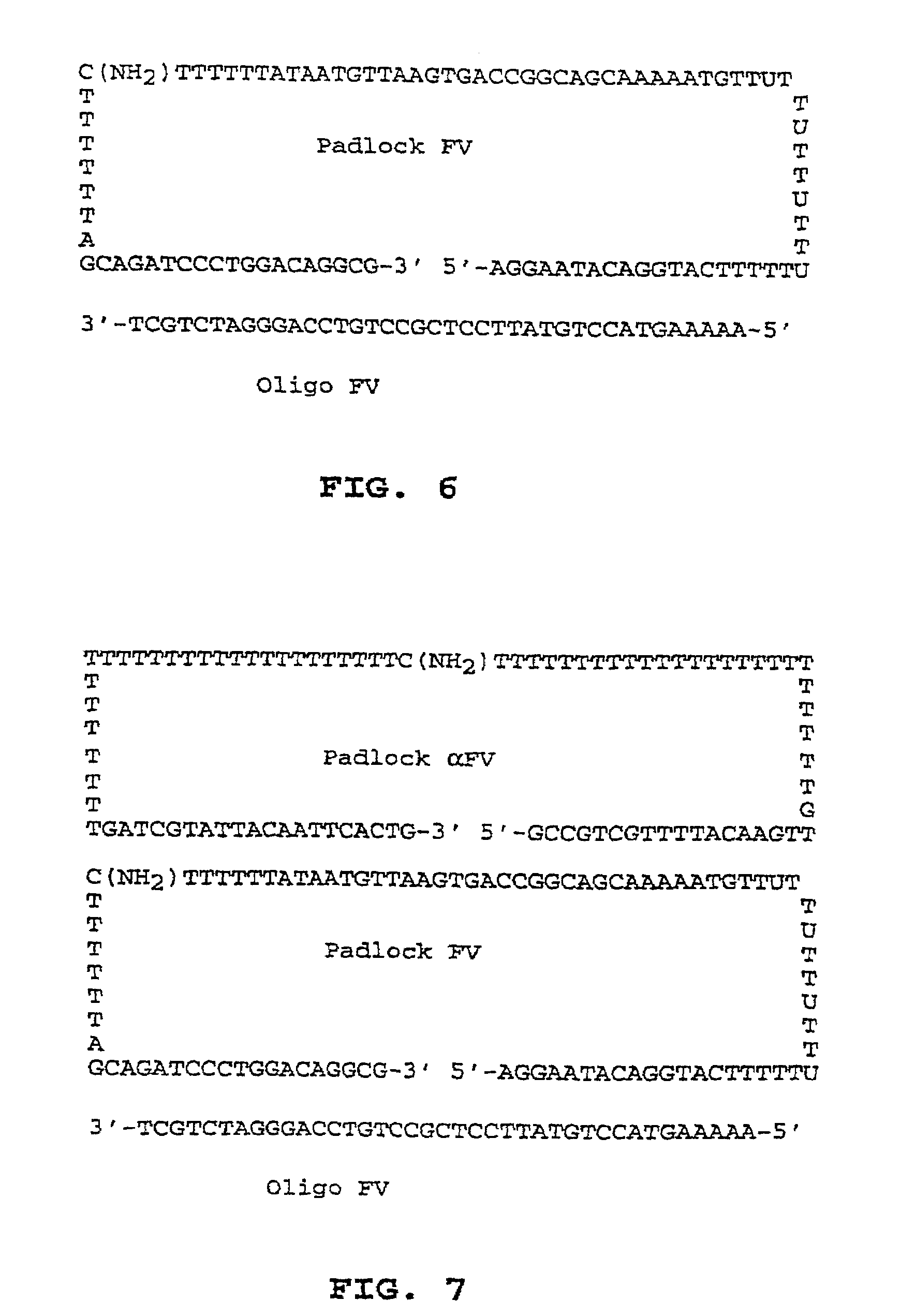Probing of specific nucleic acids
a specific nucleic acid and probe technology, applied in the field of specific nucleic acid probes, can solve the problems of exponential increase, false detection signal generation, and crosstalk between noncognate probe pairs, and achieve the effects of reducing noise, kinetics, and specificity
- Summary
- Abstract
- Description
- Claims
- Application Information
AI Technical Summary
Benefits of technology
Problems solved by technology
Method used
Image
Examples
example 1
Detection Principle (FIG. 1)
[0043]The detection principle is based upon that described above with regard to FIG. 1. A padlock probe of a defined specificity (below to Factor V) is synthesized with a few thymine (T) bases replaced by uracil (U) bases and is covalently immobilized to a surface or immobilized via biotin to a streptavidin-coated surface. Beyond the coupling site to the surface the padlock probe has a detectable tag, e.g. a fluorophore, and the uracil-containing part. The padlock probe is hybridized and ligated to its template and treated with the enzyme uracil DNA glycosylase (UDG). UDG cleaves off the uracil bases from the padlock probe to leave the phosphodiester bond.
[0044]This abasic binding is unstable and is easily broken by heat, basic pH or Exonuclease III. If ligation has taken place, the tag signal will remain after wash, but if no ligation has taken place, the signal tag may be washed away since that part of the padlock probe is no longer connected to the res...
example 2
Detection Principle (FIG. 2)
[0046]The detection principle is based upon that described above with regard to FIG. 2. Two different padlock probes A and B are used. One probe A has specificity to a template (below Factor V) and also exhibits a back-piece sequence which is complementary to the other probe B. Padlock probe B is tagged, e.g. with a fluorophore. Below it is demonstrated that (i) padlock probe A can be circularized in the ligation to its template consisting of a complementary oligonucleotide; (ii) padlock probe B can be circularized to padlock probe A; and (iii) padlock probes A and B can be circularized in the ligation to template.
(i) Circularization of Padlock Probe A in Ligation to Complementary Oligonucleotide
[0047]0.1 pmole of 92-mer padlock probe to Factor V (Padlock FV, FIG. 7) described in Example 1, padlock probe A, and 1.35 pmole of Factor V oligonucleotide (Oligo FV, FIG. 7) complementary to padlock probe A was ligated by 6 units of T4 DNA ligase at 37° C. for 3...
PUM
| Property | Measurement | Unit |
|---|---|---|
| structure | aaaaa | aaaaa |
| stability | aaaaa | aaaaa |
| size | aaaaa | aaaaa |
Abstract
Description
Claims
Application Information
 Login to View More
Login to View More - R&D
- Intellectual Property
- Life Sciences
- Materials
- Tech Scout
- Unparalleled Data Quality
- Higher Quality Content
- 60% Fewer Hallucinations
Browse by: Latest US Patents, China's latest patents, Technical Efficacy Thesaurus, Application Domain, Technology Topic, Popular Technical Reports.
© 2025 PatSnap. All rights reserved.Legal|Privacy policy|Modern Slavery Act Transparency Statement|Sitemap|About US| Contact US: help@patsnap.com



